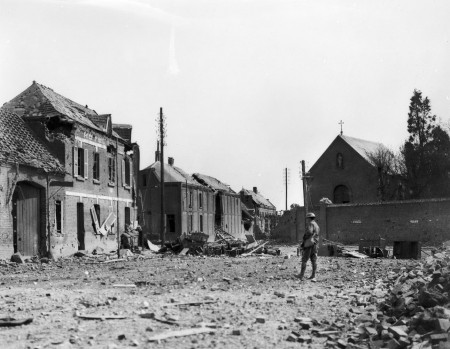Villers-Bretonneux
Villers-Bretonneux was a key village on the Western Front; it served as the gateway to Amiens and was an important railway junction. Possession of Villers-Bretonneux would give the German Army an open path to Paris. The Germans attempted a breakout from their defensive positions in March 1918 along the frontline. This breakout was, at first, highly successful. Within days the Germans had regained much of the ground they had surrendered in 1916. The Australians counter-attacked from both north and south on the night of 24–25 April 1918 with great ferocity. The confidence of the Australians was high; they trusted their commanders, they remembered ANZAC Day and they had become very experienced attacking troops.
 For the first time in the war, tanks were employed by both sides. The Germans had begun their attack on the village with tanks and the Allies also used tanks to repel them. The Australian attack linked up on the eastern side of the village, surrounding the enemy and expelling the Germans from the village completely. This involved close-quarters fighting between the two forces in the rubble of houses and in the cellars beneath.
For the first time in the war, tanks were employed by both sides. The Germans had begun their attack on the village with tanks and the Allies also used tanks to repel them. The Australian attack linked up on the eastern side of the village, surrounding the enemy and expelling the Germans from the village completely. This involved close-quarters fighting between the two forces in the rubble of houses and in the cellars beneath.
The Australians were successful at Villers-Bretonneux with the village remaining in Allied control thereafter. Much later, the Australian National Memorial in France was built just outside the village and a national commemoration takes place there each year on the anniversary of the battle. Victorian schoolchildren contributed liberally to a fund to rebuild the village school, named the ‘Victoria School’, after the war and they are still remembered there.
Do you have an ancestor who served at Villers-Bretonneux? Share your story.





